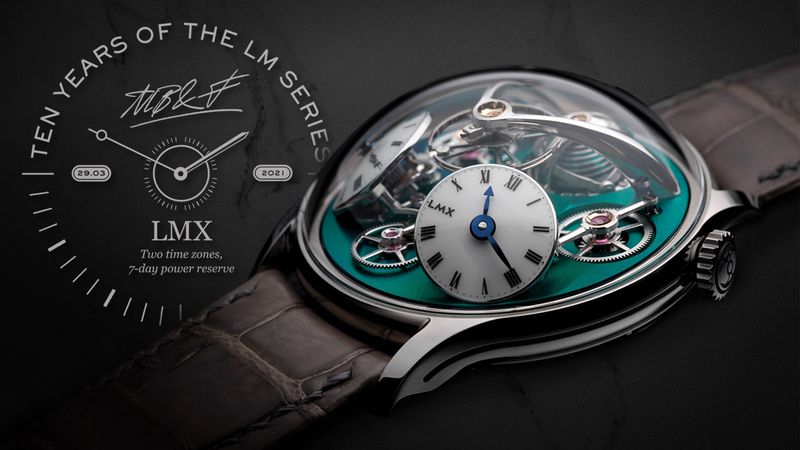THE JOURNAL

The world of watchmaking in the early 2000s was a lively, optimistic era, marked by the emergence of a radical new wave of independent brands. Names such as Urwerk, Richard Mille, De Bethune, Romain Gauthier and Greubel Forsey – and dozens of others, not all of which survived the financial crises and subsequent slowdowns of the 2010s – shook things up massively by introducing watches that looked nothing like your average conception of a timepiece. Weird, angular cases made from exotic alloys, produced in wild colours with daring and often outright bizarre methods of actually telling the time – caterpillar-tread belts, rotating globes, even miniature steel balls suspended in glass tubes by magnets.
By the standards of the Swiss watch industry, it was a Rolls-Royce driven head-on into a swimming pool; a Banksy-at-Christies, Jay-Z-at-Glasto, black-tie-with-sneakers moment of upending the established order. If you’re thinking it probably doesn’t take much to rock the boat in the world of high-end horology, you’d be right. But still, these were some pretty out-there watches.
Right there among the best of them was MB&F, debuting in 2005 with its line of “Horological Machines” – the first of which looked like two watch cases collided, the result of some kind of sci-fi, time-travelling freak accident. Later models have resembled frogs, jet engines, bulldogs and cars. All par for the course from the new generation of crazy, inventive watchmakers.
So, it was a bit of a surprise when, six years later, founder Mr Max Büsser appeared to yank on the handbrake, turning to his team of iconoclasts and saying, “Hey, what about we do a watch with a round case and hands?” Despite some resistance, the Legacy Machines series was born, with the release of LM1 in 2011. And of course, Büsser’s pitch wasn’t for the disruptive spirit to die down and join the mainstream. Rather, he wanted to imagine what kind of watches MB&F would have made had he been born in the 18th century, rather than the 20th. The results, now that we look back at 10 years of Legacy Machines, have included some of the most interesting and groundbreaking (not to mention award-winning) of the era.

And as it has done before, when it marked both its 10th anniversary as a brand and the 10th design in the Horological Machines line, MB&F has released a watch numbered with a Roman X. The LMX features most of the hallmarks of the LM collection, but as you’d expect, adds a few new things, too. Present is the domed sapphire, and below that the angled dials – this is a watch capable of displaying two time zones – with a large, exposed balance wheel right at the centre, held aloft by the arcing V-shaped bridge.
Nestled within that V-shape is the watch’s most notable new feature: a power-reserve display that makes a real centrepiece of the movement’s seven-day running time. A nod back to the LM1, which featured the world’s first vertical power-reserve display, this hemispherical indicator has two sets of markings, and lets you keep track of elapsed time either with a simple countdown from one to seven or running through the days of the week.
Of course, to make any sense of the latter, you’d have to be a fairly organised sort, committed to setting your fully wound watch on a Monday morning, and resisting the urge to wind it at all throughout the week. But I think for a watch like this, you might just make the effort.